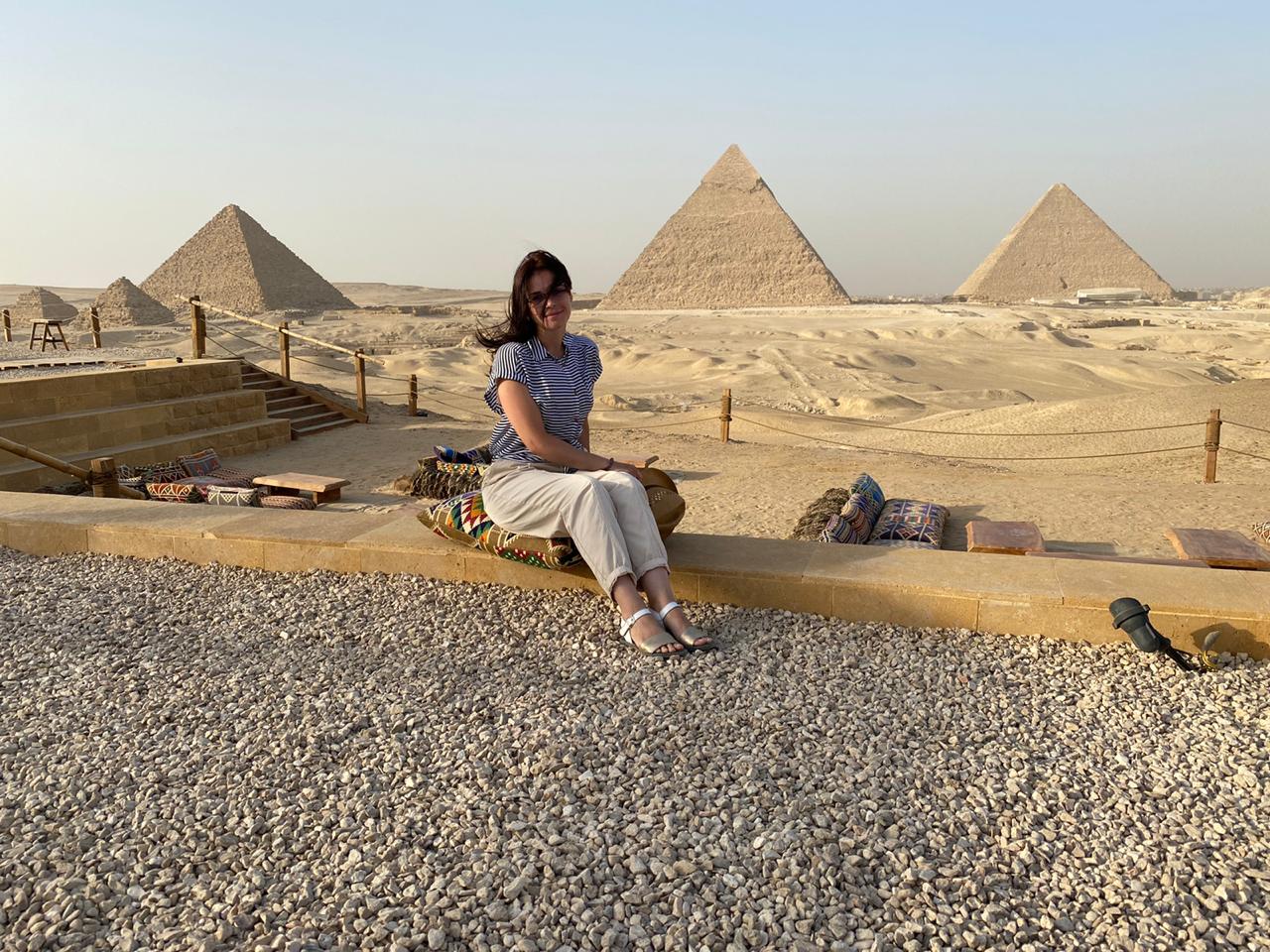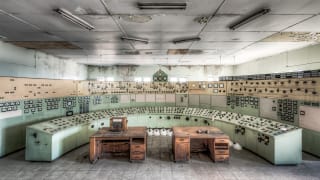The Cairo Atelier opened an exhibition on Sunday showcasing the work of three artists–Suzanne el-Masri, Adel Wassily and Dina el-Gharib–whose skills range from jewelry-making to photography and collage.
The variety of the work exhibited was reflected by the eclectic crowd that moved quietly from one room to the next in order to admire the works of art on display.
Jeweller Suzanne el-Masri’s silver and enamel necklaces appear to have been sculpted by nature itself. Each piece is an ode to the delicacy and poetry of nature, shaped by the artist’s sensitivity. While one necklace is a composition of interlocking gold-plated alga, another piece is a fragile and flowery silver structure enclosing a delicate string of pantyhose used as a chain.
“This is my favorite piece,” confesses el-Masry, pointing to the surreal necklace pinned to a velvet frame.
The artist, who has been designing jewelry for the past 30 years, has continuously used nature as her primary source of inspiration. She explains that her work is split into two major types: one is organic and earthy, while the other is more colorful, reflecting North African and Pharaonic origins.
One particular necklace was clearly inspired by Ancient Egyptian art–broad in shape and displaying three rows of colored enamel-covered silver pieces interlinked with one another.
What is most striking about el-Masri’s style is that, despite the impressiveness of her jewels and her use of good-sized stones, all her necklaces nevertheless have a light feel and an evanescent aspect.
In the adjacent exhibition space, Adel Wassily’s photographs depict old and deserted streets of Cairo, ancient doors and windows worn out by time, along with scattered portraits of men met in the street.
“I’m fascinated and attracted by decaying glory and the faded splendor of the past,” says Wassily about his artwork.
He focuses on the old Cairo streets that used to be exquisite, bordered by once-fantastic homes, and captures their decadence. Today, the sidewalks are littered with garbage and dust heaps, while the walls that were once nicely decorated have turned a hegemonic, earthy color.
His work on old doors is particularly interesting, as he chose to immortalize modest entryways with simple wood carvings that were never renovated and which can barely be closed today. He photographed one ramshackle and deserted house, the façade of which is still standing, focusing on the wooden shutters of a first-floor window opening onto the sky behind.
In another picture, a woman wearing a Niqab and cheap plastic sandals strolls along the walls of an old mosque. In a nook, an abundance of empty wooden crates is piled high on one of the Mosque’s walls.
Another picture teems with absurdity–and a hint of despair–as it portrays an abandoned car door placed standing on a graffiti-splashed wall, along with an aluminium table of the kind used in Cairo coffee shops, with a lone piece of bread drying on the top of it.
His portraits are also interesting, reflecting the photographer’s obvious fascination with craggy visages and strong expressions. Zooming in on the face of a cotton candy seller, Wassily manages to capture his angry, brutal features, which contrast starkly with the rosy little bags he carries on his back.
“I’m afraid that these places–and these people–will disappear someday," Wassily explains. "This is why I shoot them.”
He goes on to admit that his inspiration is driven mostly by nostalgia.
On the ground floor of the Atelier, artist Dina el-Gharib takes the viewer into a different world entirely.
She uses mixed media in her collages, such as recycled paper, iron nets, torn pieces of magazine, excerpts of yellowish French novels, rusty nails and old maps.
“It took me years to realize that collage offered me the biggest set of artistic possibilities,” explains el-Gharib. “I consider myself a collage,” she adds, noting that she was born of an Egyptian father and a Greek-British mother.
Most of the pieces exhibited are medium sized. El-Gharib modestly points out that she needs more confidence before being able to produce massive art pieces.
One series of collages on recycled paper done by the zabaleen–traditional trash collectors–is almost bare, except for some geometrical shapes in paper or fabric stuck here and there. A few dark brushstrokes break these straight lines, however, to give the piece a hesitance that allows the viewer to arrive at his or her own interpretations.
Her work is peppered with quotes, codes, arrows and signals, yielding an intriguing end-product that serves to raise question marks in the head of the viewer.
El-Gharib’s contemporary universe–urban and colorful–requires patience and imagination, but the keys to understanding her work are there, albeit well-hidden.
The exhibition will run until 19 March.
Cairo Atelier
2 Karam Al Dawla St., Cairo
Tel: (2) 574-6730




